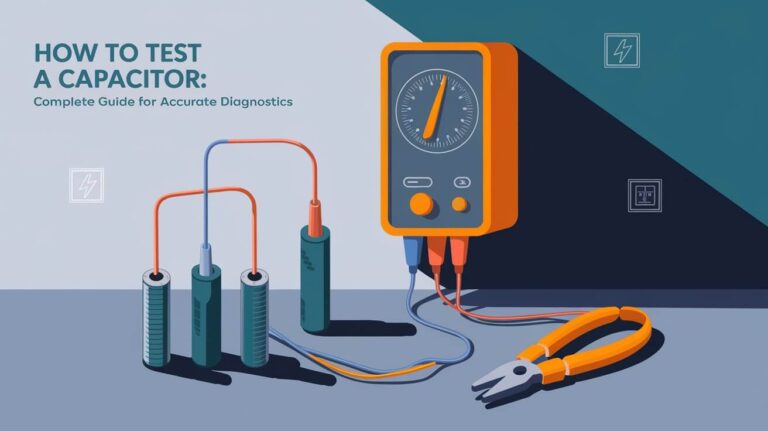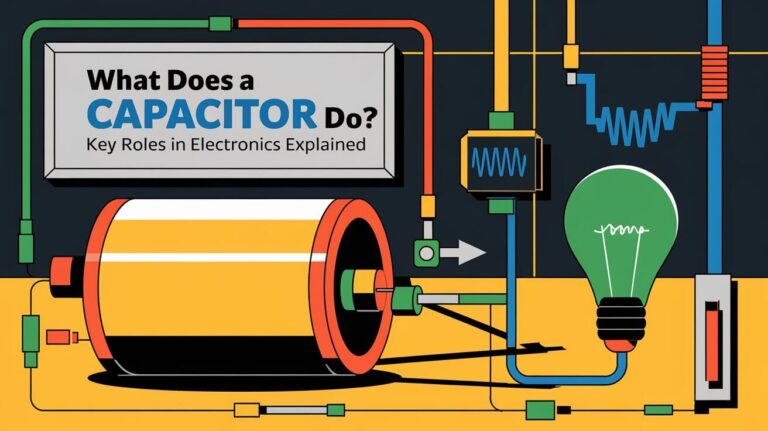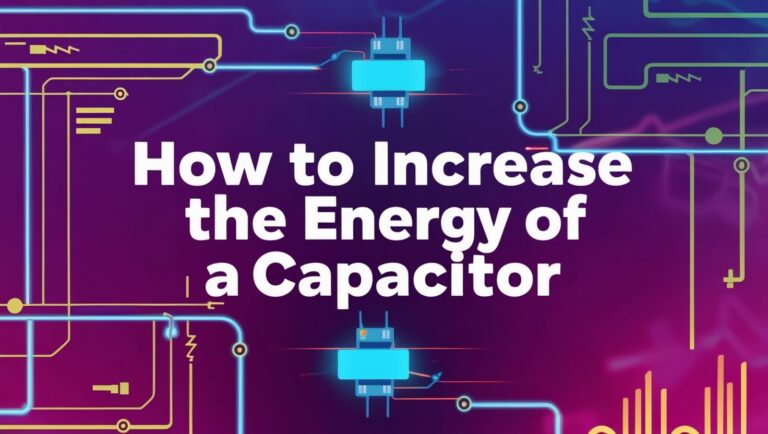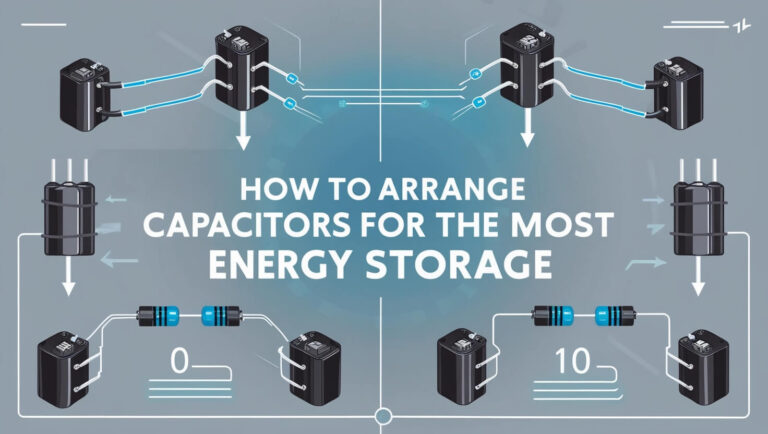What is a Capacitor? Definition, Types, and Practical Uses
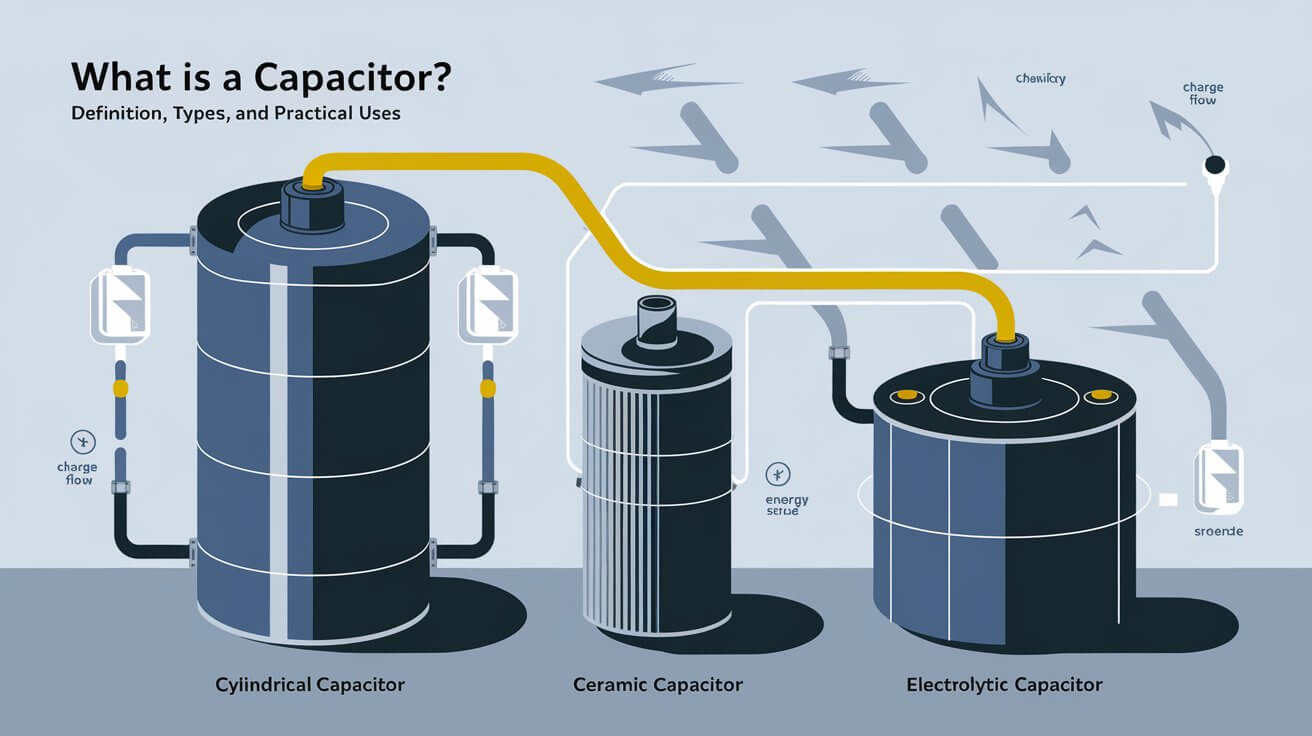
Capacitors are essential components in electronics, designed to store and release electrical energy quickly. They appear in a wide range of devices, from tiny electronics like smartphones and computers to large power grids. Capacitors serve crucial functions, such as stabilizing power supplies, filtering signals, and even providing temporary backup power in some devices. In this article, we’ll dive deep into what capacitors are, how they work, the types available, and the variety of ways they’re used.
Understanding Capacitors: Basic Definition and Function
A capacitor is a passive electrical component that stores energy in an electric field. Unlike batteries, which provide continuous energy over time, capacitors can rapidly charge and discharge. This makes them perfect for applications where quick energy bursts are necessary, such as in signal processing or stabilizing fluctuating power supplies.
Capacitors generally consist of two conductive plates separated by an insulating material called a dielectric. When voltage is applied, electrons accumulate on one plate, creating an electric field and storing energy.
Key Terms to Know
- Capacitance: The ability of a capacitor to store an electric charge, measured in Farads (F).
- Dielectric: The insulating material between a capacitor’s plates.
- Electric Field: Created between the plates when charge builds up.
- Voltage Rating: The maximum voltage a capacitor can safely handle without breaking down.
The Science Behind Capacitors
Capacitors function based on a simple principle: storing electric charge in an electric field. When a voltage source, like a battery, is connected, electrons accumulate on one of the plates while the other plate loses electrons, creating a positive charge. The dielectric material between the plates prevents the charges from passing through, but the electric field remains, holding the energy in place.
Charging and Discharging
When a capacitor is fully charged, the electric field between the plates holds energy. If the voltage source is disconnected, the capacitor retains this charge for a period. When a load, such as a resistor or a light bulb, is connected across the capacitor, it discharges its stored energy, providing a short burst of power.
Basic Formulae
The capacitance of a capacitor is defined by the formula:
C=QVC = \frac{Q}{V}C=VQ
Where:
- CCC = Capacitance in Farads
- QQQ = Charge in Coulombs
- VVV = Voltage in Volts
The energy EEE stored in a capacitor is given by:
E=12CV2E = \frac{1}{2} CV^2E=21CV2
These equations help engineers calculate the right capacitance and voltage values for various applications.
Types of Capacitors and Their Uses
Capacitors come in many types, each suited to specific applications based on characteristics like size, capacitance range, and stability.
Electrolytic Capacitors
Electrolytic capacitors offer high capacitance in a relatively small package. They are commonly used in power supply circuits to smooth out voltage fluctuations. However, they are polarized, meaning they must be connected correctly to function.
Ceramic Capacitors
Ceramic capacitors are known for their stability and are often used in high-frequency applications. They’re compact, making them ideal for circuits with limited space.
Film Capacitors
Film capacitors are non-polarized and excel in precision applications where stable capacitance is essential, like audio equipment and signal filtering.
Tantalum Capacitors
Tantalum capacitors are highly reliable and compact, commonly used in devices requiring high capacitance but with space limitations, like smartphones and tablets.
Supercapacitors
Supercapacitors, or ultracapacitors, offer extremely high capacitance values, often in the range of farads. They provide fast charging and discharging cycles and are used in applications like energy storage systems, electric vehicles, and backup power supplies.
Polarized vs. Non-Polarized Capacitors
Capacitors come in two varieties: polarized and non-polarized.
- Polarized Capacitors: Must be connected with correct polarity, often used in power supply circuits.
- Non-Polarized Capacitors: Can be connected in any orientation, making them ideal for AC applications.
How Capacitors Work in Circuits
Capacitors are versatile components with a range of functions in electronic circuits. Here are some of the most common roles:
Energy Storage Mechanism
Capacitors store energy quickly and release it as needed. They help stabilize power supplies by holding charge and discharging when there’s a drop, ensuring that the connected device operates smoothly.
Blocking DC and Passing AC
Capacitors allow AC signals to pass while blocking DC signals. This is crucial in audio circuits, where they filter out unwanted DC components from AC signals, improving sound quality.
Decoupling and Power Supply Stabilization
In power supply circuits, capacitors act as buffers to filter out voltage ripples. When a power supply briefly drops in voltage, capacitors can compensate by releasing stored energy, preventing the connected components from experiencing fluctuations.
Timing Circuits
Capacitors are used in circuits that require timing control, such as oscillators. The time it takes for a capacitor to charge or discharge helps control the timing intervals in devices like flashing lights or alarms.
Practical Applications of Capacitors
Capacitors are used across various industries and applications:
Consumer Electronics
In electronics like cameras and smartphones, capacitors manage power flow, ensuring that components operate without interruption.
Automotive Industry
Capacitors are crucial in electric vehicles (EVs) for regenerative braking systems. When a vehicle brakes, capacitors store the kinetic energy as electrical energy, which is later used to power the car, improving efficiency.
Power Grids and Renewable Energy
Capacitors stabilize and smooth out voltage and current levels in power grids, ensuring efficient energy distribution. They are also critical in solar and wind energy systems, where they manage inconsistent power flows.
High-Speed Data Systems
In telecommunications, capacitors filter out noise, ensuring smooth and high-speed data transmission.
Capacitance, Voltage, and Tolerance: Key Specifications
Understanding the specifications of capacitance, voltage, and tolerance is important for selecting the right capacitor for a given application.
Capacitance and Its Measurement
Capacitance is measured in farads, though most practical capacitors are rated in microfarads (μF) or picofarads (pF). The required capacitance depends on the intended application, whether for quick discharges in high-speed circuits or stable energy storage.
Voltage Rating
Capacitors must match or exceed the voltage of the circuit in which they’re used. If a capacitor is exposed to higher voltages than it can handle, it can degrade or fail.
Tolerance Levels and Reliability
Tolerance refers to the acceptable range of variation from the rated capacitance value. Capacitors with low tolerance are used in precise applications, while those with high tolerance are suited for general use.
Capacitor Sizing and Selection Guide
When selecting a capacitor, consider the following factors:
- Capacitance Value: Choose based on required charge storage.
- Voltage Rating: Ensure it meets the circuit’s voltage needs.
- Dielectric Type: Select based on stability, temperature, and frequency.
- Physical Size: Check if space constraints are a factor.
Advanced Concepts and Innovations in Capacitors
Dielectric Material Advancements
New materials, like ceramics and polymers, are improving capacitor performance, especially in terms of stability and temperature resistance.
Nanotechnology in Capacitor Design
Nanotechnology is enhancing the surface area of capacitor plates, increasing capacitance without increasing physical size. This innovation is particularly promising for compact devices.
Supercapacitors for Energy Storage
Supercapacitors are redefining energy storage, with high capacitance allowing quick charges and discharges. They’re valuable in electric vehicles, power backup systems, and renewable energy grids.
Troubleshooting and Maintenance of Capacitors
Capacitors are durable but can fail over time. Here’s what to look for:
Signs of Failure
- Physical Deformation: Bulging, cracking, or leaking are signs of failure.
- Reduced Performance: Lower capacitance or fluctuating power output can indicate degradation.
Testing Capacitors
Use a multimeter or an ESR (Equivalent Series Resistance) meter to check for functionality.
Extending Capacitor Life
Capacitors last longer with correct voltage levels and controlled temperatures. Avoid exceeding their rated voltage and store them away from high heat.
Frequently Asked Questions About Capacitors
What Are the Main Differences Between Capacitors and Batteries?
While both store energy, capacitors release it quickly, whereas batteries provide steady output over time.
Why Do Capacitors Fail?
Capacitors degrade with age, excessive voltage, and temperature. Proper maintenance can extend their life.
How Long Can a Capacitor Store Energy?
While capacitors can store energy briefly, they are not ideal for long-term energy storage, unlike batteries.
Are Supercapacitors Better Than Batteries for Storage?
For short, high-power needs, supercapacitors are excellent. However, batteries remain the go-to for long-term energy storage.
Conclusion
Capacitors are fundamental in modern electronics, providing efficient energy storage and control across applications. From smoothing power flows in electronic devices to enabling regenerative braking in electric vehicles, they play a versatile role. With advances in materials and design, capacitors will continue to be pivotal in powering and improving technology, supporting everything from renewable energy to everyday gadgets.

